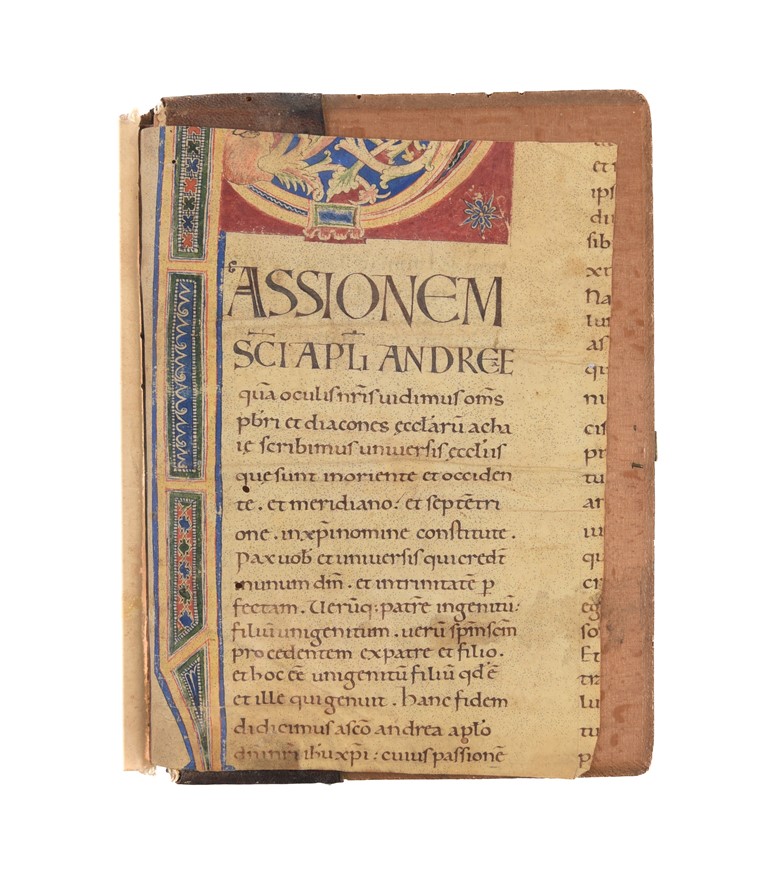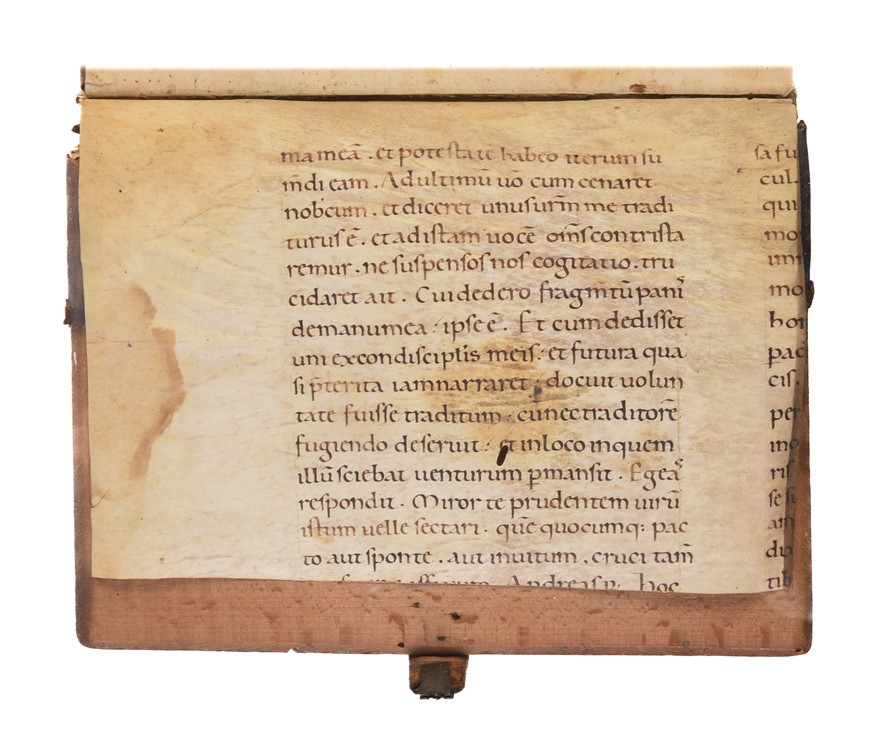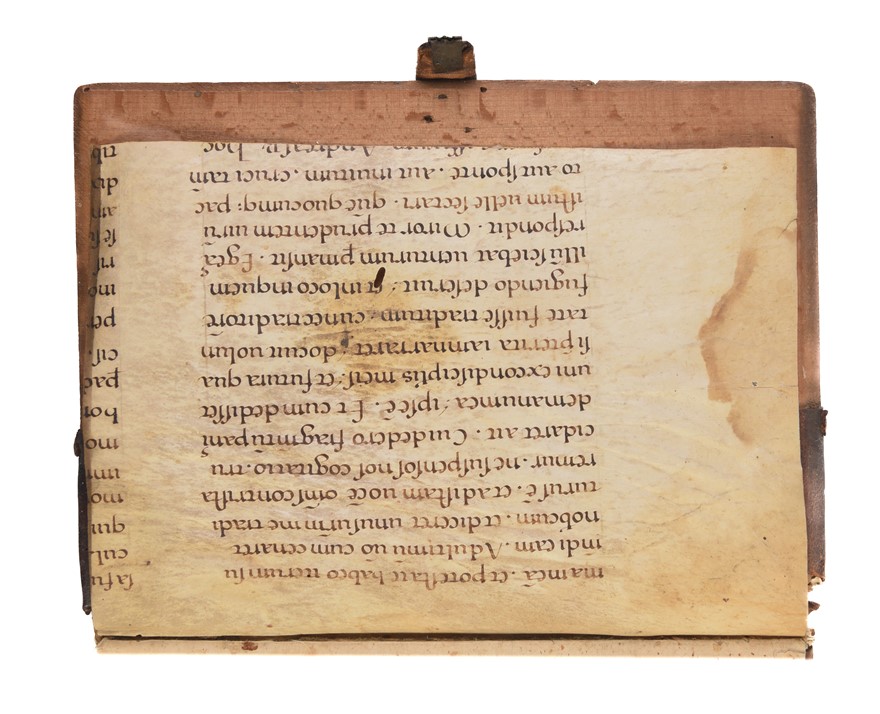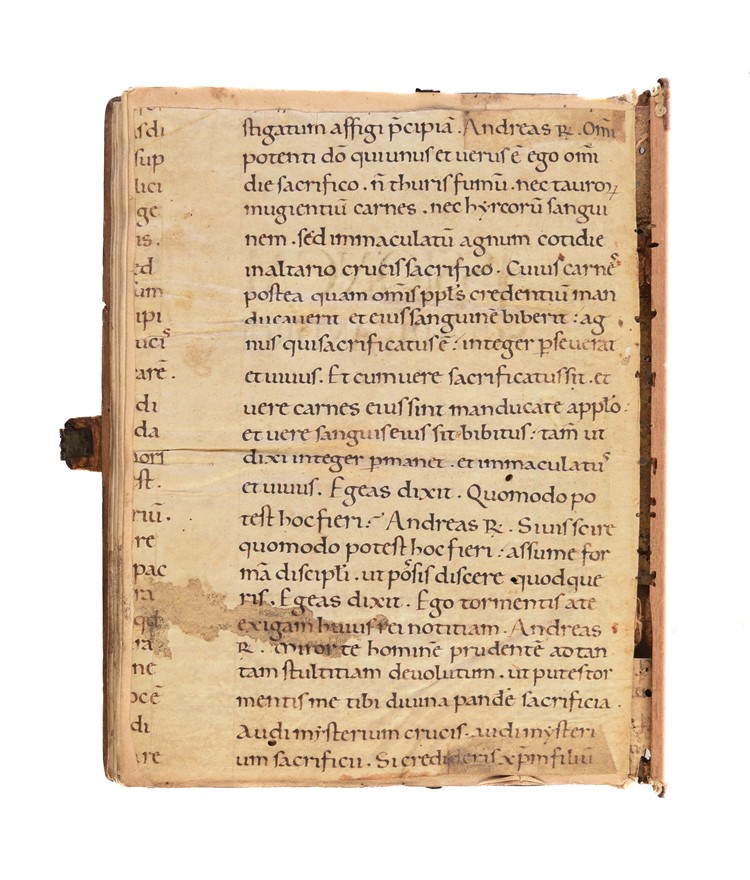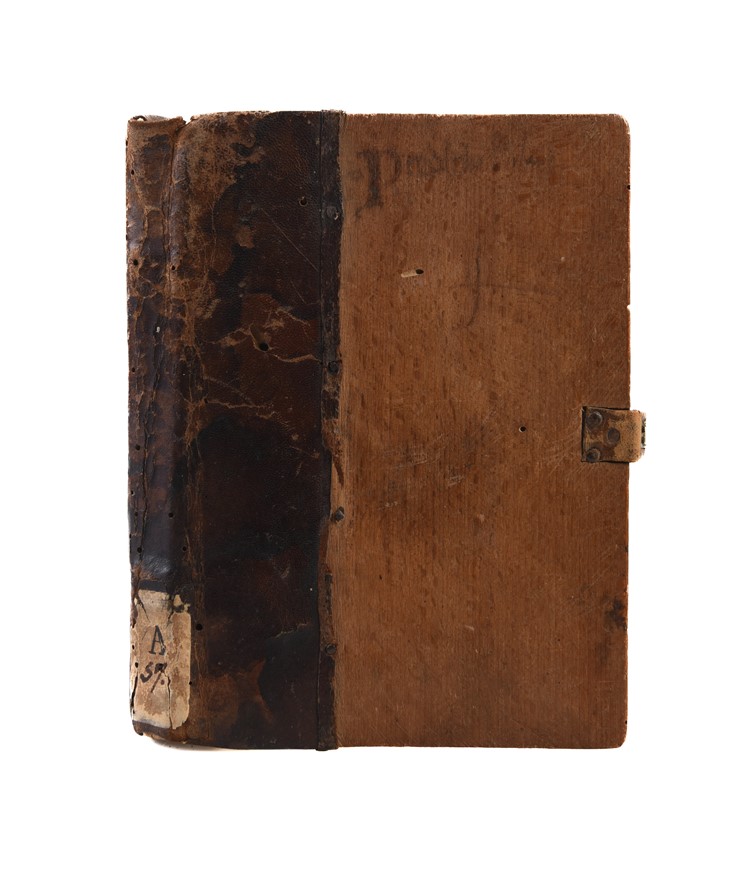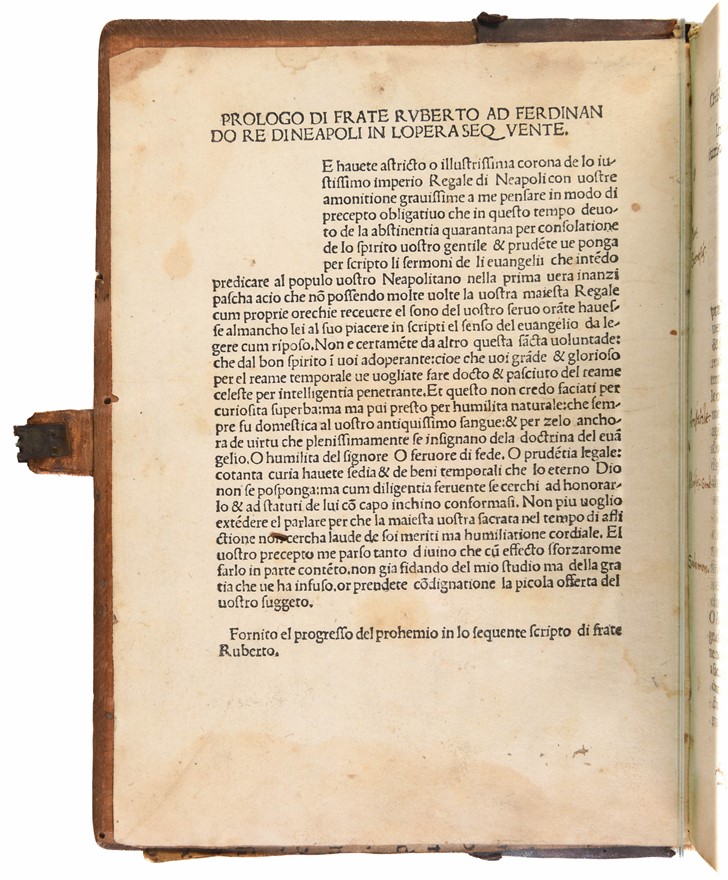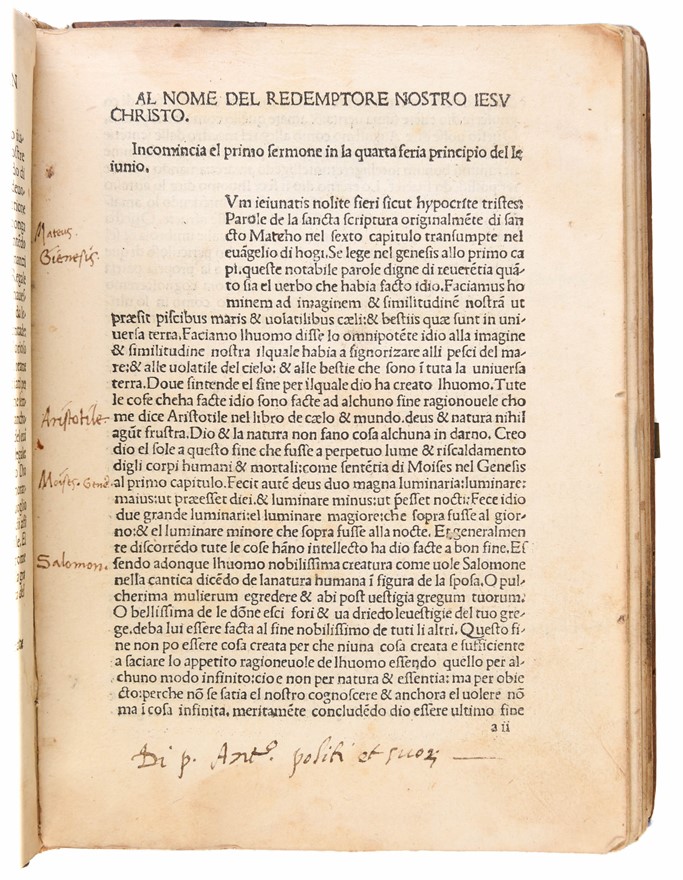Sermones quadragesimales [Italian collection] Le Prediche di Frate Roberto.Venice, Jacobus Rubeus, 10 November 1488
CARACCIOLO Roberto (1488)
£25000.00
Please contact us in advance if you would like to view this book at our Curzon Street shop.
MID-12TH CENTURY ILLUMINATED PASTEDOWN
4to (207 x 150mm). 94 leaves (last blank), 36 lines, roman type. Contemporary Italian half calf over wooden boards, single clasp, two lifted manuscript pastedowns and lining of spine (from an Italian twelfth-century Passionary), one pastedown containing part of a large, decorated initial - see below (binding rubbed with some wear, clasp broken).
4to (207 x 150mm). 94 leaves (last blank) [a-l8 m6] 36 lines, roman type. Contemporary half calf over wooden boards, single clasp, two lifted manuscript pastedowns and lining of spine (from an Italian twelfth-century Passionary), one pastedown containing part of a large decorated initial - see below(binding somewhat worn, end of strap snapped).
A rare Italian edition of the famous preacher Caracciolo’s hugely popular sermons, dedicated to Ferdinand of Aragon, king of Naples; ISTC lists twenty-four copies with only one in the US at the Free Library of Philadelphia and none in the UK.
Roberto Caracciolo (1425-1495) was one of the most celebrated Italian preachers of the 15th century, "popular audiences loved and even worshipped him, but also learned humanists and high prelates appreciated his knowledge and oratory" (Mariani). It is not surprising therefore that he was also one of the few authors of the first decades of printing to see his writings become best-sellers - although examples from the Latin editions of his sermons are numerous surviving copies from the Italian versions are scarce. Mariani notes that he was one of the first to commit himself to the composition of model sermons in the vernacular and that he "clearly had a specific audience of readers in mind, not constituted by fellow preachers, but by a larger audience of readers - religious and lay- who could directly find religious instruction within his writings without the mediation of the pulpit".
This copy is especially interesting as the two surviving manuscript pastedowns are cut from a single leaf of a Passionary which can dated to the mid-12th century and localized with all probability, to Tuscany, and perhaps Florence.
The illuminated ‘P’ introduces the prologue to an account of the martyrdom of St Andrew the Apostle: ‘Passionem sancti apostoli Andree quam oculis nostris vidimus … a sancto Andrea apostolo domini nostri Ihesu Christi, cuius passionem’ (Bibliotheca Hagiographica Latina, I, no. 428). The flyleaf at the front of the volume has the upper right corner of the recto of the leaf, including the upper right corner of the illuminated initial “P”, and text from “dolorum. Cui occurrens sanctus Andreas dixit …” to “Que hoc docent homines”, and the upper left corner of the verso, from “ma mean. Et potestate habeo iterum sumendi eam …” to “aut invitum. cruci tamen”.
The late Caroline script is elegant and has features that suggest a date no later than about the mid 12th century, notably the letter “f” that descends below the baseline (as also, to a lesser extent, does the tall “s”); the predominant use of tall “s” instead of round “s” (except occasionally at the end of a word, very rarely at the beginning, and in the large capitals of the incipit); the lack of any touching of adjacent letters “p” (or indeed other adjacent rounded letters such as “oc”).
The date suggested by the script is corroborated by the decoration. The formal qualities of the initial place it in what Edward Garrison, and following him Knut Berg, call the “Late” style of “Geometrical Initial” (see E.B. Garrison, Studies in the History of Medieval Italian Painting (Florence, 1953–1962), and Knut Berg, Studies in Tuscan Twelfth-Century Illumination (Oslo, 1968). The Early Geometrical Initial style seems to have originated in Rome in the third quarter of the 11th century in some of the earliest Italian so-called Giant Bibles, which themselves were emulating very large Carolingian Bibles. The Transitional Initial emerged at about the beginning of the 12th century: in this style interlace patterns initially predominate, but later increasingly abstract foliate motifs take its place, and finally, from the 1140s, the Late Geometrical Initial. This is a natural evolution of its predecessor, and dominates for the whole of the second half of the century: the foliage inside the initial is almost always drawn in outline leaving the designs as bare parchment, with some modelling in colour-washes, set against a dark blue ground, and the field surrounding the initial often has flowers, birds, or (as here) rosettes in the corners; the shaft of the Late Geometrical initial are usually floral, including abstract four-petalled rosettes in lozenges and X-shaped crosses in squares (as here).
Provenance: “Di p. Ant.o Politi et suor[um]”, early inscription at foot of second leaf; “Berno Bni nacque adi 22 di marzo 1540 segnato a [--]”, inscription at end."
A little stained and marked in places but generally a good, wide-margined copy.
ISTC ic00157000. Goff C157. HC(Add) 4455. GW 6103. ISTC ic00157000 lists 24 copies (20 in Italy, two of which are incomplete) – only Free Library of Philadelphia (Copinger-Widener Collection) in the US; none in UK libraries.
Ref: Giacomo Mariani, Roberto Caracciolo da Lecce, (2022), p.260.
Stock Code: 246775
